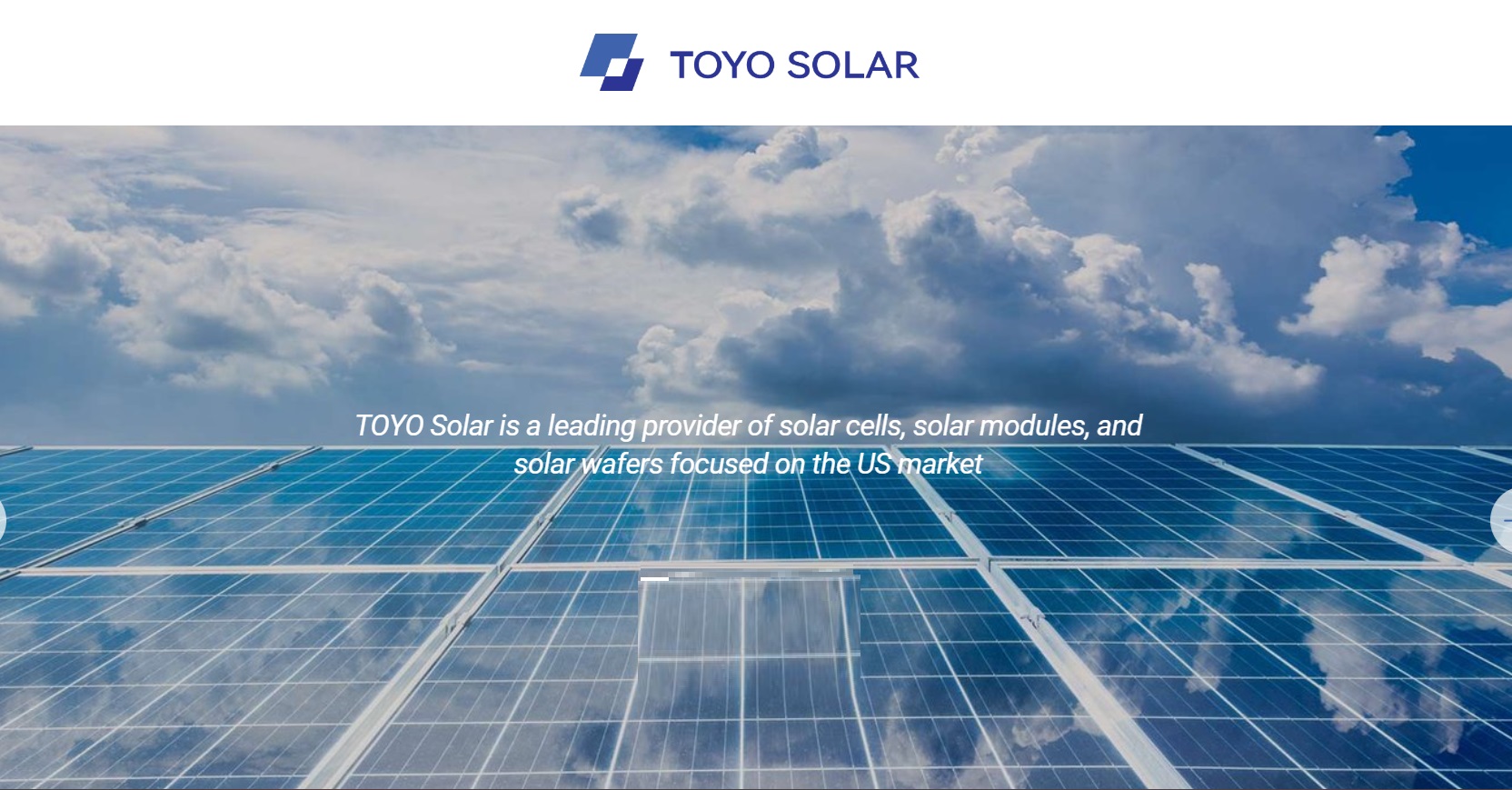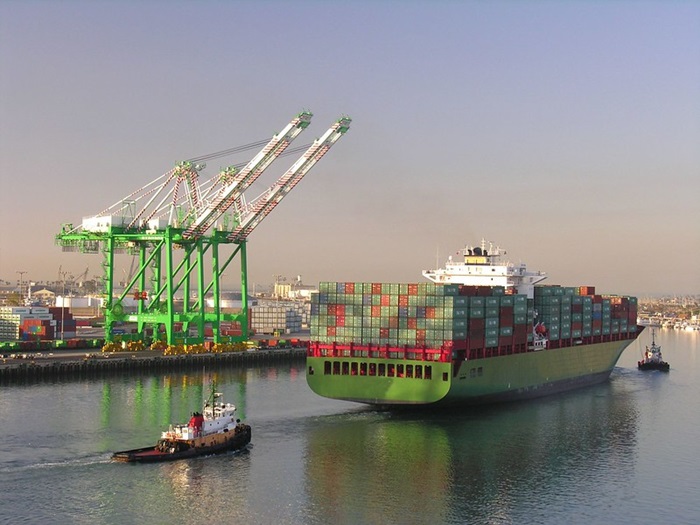1. Equinix Secures $15 Billion for U.S. Data Center Expansion with Sovereign Wealth Funds
Equinix, a leading global data center operator, has announced a significant joint venture with Singapore’s sovereign wealth fund, GIC, and the Canada Pension Plan Investment Board (CPP Investments). This partnership aims to raise over $15 billion to expand Equinix’s U.S. data center footprint.
The joint venture, established on October 1, 2024, is set to accelerate the growth of Equinix’s xScale data center portfolio. This expansion is driven by the increasing demand for data storage and processing power, fueled by the rise of artificial intelligence (AI) and cloud computing. The new facilities will cater to hyperscale customers, including major technology companies such as Amazon, Microsoft, and Google.
Strategic Investment for a Digital Future
The partnership will enable Equinix to purchase land and build new data centers with a capacity of more than 100MW in the U.S., eventually adding over 1.5GW of new capacity. This move is expected to nearly triple Equinix’s investment in data center infrastructure, highlighting the growing importance of digital infrastructure in the global economy.
Meeting the Soaring Demand
The digitisation of the global economy and the rapid adoption of AI technologies have significantly increased the demand for data centers. In the first eight months of 2024 alone, data center operators announced foreign direct investment (FDI) projects worth $72.3 billion, surpassing previous records. The average capital expenditure per project has also reached new heights, reflecting the industry’s shift towards larger, more efficient facilities.
A Collaborative Effort
Under the terms of the joint venture, GIC and CPP Investments will each hold a 37.5% equity interest, while Equinix will retain a 25% stake. This collaborative effort underscores the strategic importance of data centers in supporting the digital transformation of businesses worldwide.
Conclusion
Equinix’s partnership with GIC and CPP Investments marks a significant milestone in the expansion of U.S. data center infrastructure. As the demand for data storage and processing continues to grow, this joint venture will play a crucial role in meeting the needs of hyperscale customers and driving the digital economy forward.
2. Toyo’s new Ethiopian solar cell facility

In a significant move towards expanding its global footprint, Japanese solar solutions company Toyo has announced plans to establish a new solar cell manufacturing facility in Hawassa, Ethiopia. This facility is expected to have an annual capacity of 2 gigawatts (GW) and represents an estimated investment of $60 million.
Strategic Location and Investment
The new facility will be strategically located in Hawassa, taking advantage of Ethiopia’s favorable investment policies, tariff exemptions, and abundant hydropower resources. Toyo has signed a lease agreement for a 31,500 square meter facility, which will be modified to meet the needs of modern, automated solar cell production. The project is set to begin development in November 2024, with production anticipated to start by the end of the first quarter of 2025.
Economic and Environmental Impact
This initiative is expected to create up to 880 jobs, including roles in manufacturing and engineering. The facility will leverage Ethiopia’s green power supply, with approximately 90% of the country’s electricity generated from hydropower. This aligns with Toyo’s goal of reducing the carbon footprint across its supply chain, a crucial factor for utility-scale developers in the U.S., Europe, and other markets.
Market Expansion and Strategic Vision
The establishment of this manufacturing plant is a key step in Toyo’s strategic vision to diversify its supply chain and enhance its sourcing capabilities for solar solutions in the global market. This move comes in response to new U.S. tariffs on solar panels from four Southeast Asian countries, positioning Toyo to better serve the U.S. market.
Junsei Ryu, CEO of Toyo, expressed his enthusiasm for the project, stating, “We are thrilled to embark on this ambitious project, which will enable us to rapidly scale up solar cell production to meet the needs of our planned module facility in the United States. This facility will enhance our production capabilities, increase efficiency, reduce costs, and respond more swiftly to market demands, positioning Toyo as a competitive key player in the renewable energy sector.
Conclusion
Toyo’s new solar cell facility in Ethiopia marks a significant milestone in the company’s expansion strategy. By leveraging Ethiopia’s green energy resources and favorable investment climate, Toyo is set to enhance its production capabilities and meet the growing global demand for renewable energy solutions.
3. Blackstone’s $8.2 Billion Spanish Data Centre Investment

David Vives via Unsplash
In a significant move to bolster Europe’s cloud computing infrastructure, Blackstone, the world’s largest alternative asset manager, has announced plans to invest €7.5 billion ($8.2 billion) in developing data centres in the Aragon region of Spain. This investment, known as Project Rodes, will focus on a 224-hectare site in the town of Calatorao, Zaragoza.
Strategic Importance
The Aragon region is rapidly becoming a major hub for cloud computing in Europe, attracting investments from tech giants like Microsoft and Amazon. Blackstone’s decision to develop data centres in this region underscores its strategic importance. The project will initially develop half of the site, with plans to invest an additional €7.5 billion at a later stage to complete the development.
Infrastructure and Sustainability
Blackstone’s investment will involve constructing facilities with an electrical capacity of 300MW when fully operational. The company plans to install cooling systems and cable connections, leasing the buildings to companies that will install their own computer servers. This approach aligns with Blackstone’s broader strategy to expand its digital infrastructure footprint.
Regional Impact
The Aragon regional government has welcomed this investment, highlighting the region’s growing status as a cloud computing hub. To date, 19 data centre projects have been submitted for approval in the region. This influx of investment is expected to create numerous job opportunities and stimulate economic growth in the area.
Following in the Footsteps of Tech Giants
Blackstone’s investment follows significant commitments from other tech giants. In June 2024, Microsoft announced a €6.69 billion investment in data centres in Aragon, while Amazon’s cloud computing unit AWS declared a €15.7 billion investment in May 2024, focusing on powering these facilities with renewable energy. The region’s substantial wind power capacity makes it an attractive location for such sustainable projects.
Conclusion
Blackstone’s $8.2 billion investment in data centres in Spain marks a pivotal moment for the region’s digital infrastructure development. As Aragon continues to attract major investments from global tech leaders, it is poised to become a key player in Europe’s cloud computing landscape.
4. Improving apparel export to US: Top Tips

Terez Sanogo Los-Angeles-Port-and-container-ship PDM 1.0 https://creativecommons.org/publicdomain/mark/1.0/
Exporting apparel to the US market can be a lucrative opportunity, but it comes with its own set of challenges. To stand out and succeed, here are some top tips to enhance your competitiveness:
1. Understand Market Trends
Stay updated with the latest fashion trends and consumer preferences in the US. Utilise market research reports, fashion magazines, and social media to gauge what’s in demand. This will help you tailor your products to meet the expectations of US consumers.
2. Focus on Quality
Quality is paramount in the US market. Ensure that your products meet high standards in terms of fabric, stitching, and overall finish. Implement strict quality control measures to minimise defects and returns.
3. Competitive Pricing
Conduct a thorough analysis of your pricing strategy. Consider factors like production costs, competitor pricing, and market demand. Offering competitive prices without compromising on quality can give you an edge.
4. Leverage Technology
Invest in technology to streamline your production processes. Automation and advanced manufacturing techniques can reduce costs and improve efficiency. Additionally, using e-commerce platforms and digital marketing can expand your reach and visibility in the US market.
5. Sustainable Practices
Sustainability is increasingly important to US consumers. Adopt eco-friendly practices in your production processes, such as using organic materials and reducing waste. Highlighting your commitment to sustainability can attract environmentally conscious buyers.
6. Build Strong Relationships
Establish and maintain strong relationships with US buyers and distributors. Attend trade shows, participate in networking events, and engage with industry associations. Building trust and a good reputation can lead to repeat business and referrals.
7. Compliance with Regulations
Ensure that your products comply with US regulations and standards, including labeling, safety, and environmental requirements. Non-compliance can lead to costly delays and penalties.
8. Effective Branding and Marketing
Create a strong brand identity that resonates with US consumers. Invest in professional branding, packaging, and marketing campaigns. Utilise social media and influencers to promote your brand and reach a wider audience.
9. Efficient Supply Chain Management
Optimise your supply chain to ensure timely delivery and reduce costs. Work with reliable suppliers and logistics partners. Implement inventory management systems to avoid overstocking or stockouts.
10. Customer Service Excellence
Provide exceptional customer service to build loyalty and positive word-of-mouth. Offer easy returns, prompt responses to inquiries, and personalised service. Happy customers are more likely to become repeat buyers.
By implementing these strategies, you can enhance your apparel export competitiveness and successfully tap into the lucrative US market. Stay adaptable and continuously seek ways to improve your offerings and operations.
5. Growth through the African Continental Free Trade Agreement

Introduction
The African Continental Free Trade Agreement (AfCFTA) represents a monumental step towards economic integration and growth across the African continent. By creating a single market for goods and services, AfCFTA aims to boost intra-African trade, enhance competitiveness, and support sustainable development. This article explores the pathways to actualising AfCFTA and the potential benefits it holds for Africa’s economic future.
1. Background of AfCFTA
The AfCFTA was established to address the fragmented nature of African economies and to promote economic unity. Signed in March 2018 and officially launched in January 2021, AfCFTA seeks to create the largest free trade area in the world by number of countries participating. Its primary goals include increasing intra-African trade, fostering economic diversification, and promoting sustainable development.
2. Economic Integration: Benefits and Opportunities
Trade Expansion: AfCFTA aims to significantly increase intra-African trade by reducing tariffs and non-tariff barriers. This will facilitate smoother and more cost-effective trade across borders.
Market Access: With a combined market of over 1.3 billion people, AfCFTA provides businesses with access to a vast consumer base, encouraging economies of scale and enhancing competitiveness.
Economic Diversification: By promoting the production and trade of value-added products, AfCFTA encourages African countries to diversify their economies away from traditional exports like raw materials.
Investment Attraction: A unified market under AfCFTA creates a more attractive environment for both foreign and domestic investors, fostering economic growth and development.
3. Pathways to Successful Implementation
Infrastructure Development: Improving transport, energy, and digital infrastructure is crucial for supporting increased trade activities. Investments in infrastructure will reduce logistical costs and enhance connectivity across the continent.
Policy Harmonisation: Aligning national policies with AfCFTA objectives is essential for seamless implementation. This includes standardising regulations, customs procedures, and trade policies.
Capacity Building: Strengthening institutional capacities and human resources is vital for managing and facilitating trade under AfCFTA. Training programs and technical assistance can help build the necessary skills and knowledge.
Addressing Non-Tariff Barriers: Tackling issues such as customs procedures, standards, and regulations that hinder trade is essential for the success of AfCFTA. Streamlining these processes will facilitate smoother trade flows.
4. Challenges and Solutions
Political Will and Stability: Ensuring commitment from all member states and maintaining political stability are critical for the success of AfCFTA. Political will is necessary to implement and uphold the agreement’s provisions.
Economic Disparities: Addressing economic imbalances between different African countries is important to ensure that all member states benefit from AfCFTA. Policies aimed at supporting less developed economies can help bridge these gaps.
Social Integration: Promoting social cohesion and addressing issues like Afrophobia and xenophobia are essential for fostering a unified African identity. Social integration initiatives can help build trust and cooperation among member states.
Environmental Sustainability: Integrating sustainable practices in trade and industrial activities is crucial for ensuring that economic growth under AfCFTA does not come at the expense of the environment. Sustainable development policies should be prioritised.
5. Case Studies and Success Stories
Several African countries and regions have already begun to leverage AfCFTA for economic growth. For example, Rwanda has made significant strides in improving its business environment and infrastructure, attracting investment and boosting trade. Similarly, the East African Community (EAC) has seen increased intra-regional trade and economic cooperation, serving as a model for other regions.
6. Future Prospects and Recommendations
The long-term impacts of AfCFTA on African economies are promising. By fostering economic integration, AfCFTA has the potential to transform Africa into a global economic powerhouse. To maximise the benefits of AfCFTA, policymakers, businesses, and other stakeholders should focus on:
- Continuing to invest in infrastructure development.
- Ensuring policy harmonisation and regulatory alignment.
- Building institutional capacities and human resources.
- Promoting social integration and environmental sustainability.
Conclusion
The African Continental Free Trade Agreement holds immense potential for driving economic integration and growth across the continent. By addressing the challenges and leveraging the opportunities presented by AfCFTA, Africa can achieve a more prosperous and sustainable economic future.
6. UK and Switzerland Kick Off Enhanced Free Trade Agreement Talks

Mountains of Switzerland by Rahuljoshi10 CC BY-SA 4.0 https://creativecommons.org/licenses/by-sa/4.0/deed.en
On October 14, 2024, the United Kingdom and Switzerland commenced negotiations for an upgraded Free Trade Agreement (FTA). This marks a significant step in strengthening the economic ties between the two nations, which have seen trade volumes exceeding £51 billion in 2023.
A Focus on Services and Investment
The current trade agreement, largely based on an EU-Swiss deal from 1972, primarily covers goods. However, the new negotiations aim to include detailed commitments on services and investment for the first time. This is crucial as services trade accounts for nearly £30 billion of UK-Swiss trade. The enhanced FTA is expected to support jobs across the UK, including 130,000 services jobs supported by exports to Switzerland.
Economic Growth and Job Creation
Business and Trade Secretary Jonathan Reynolds emphasised the importance of this agreement in driving economic growth and creating jobs. “Trade between our two nations has quadrupled in current prices over the last 20 years, with services playing a huge role in that success,” Reynolds stated. The negotiations come at a time when the UK is showcasing its attractiveness for inward investment at the International Investment Summit in London.
Mutual Benefits and Future Prospects
The upgraded FTA aims to provide UK and Swiss businesses with guaranteed access to each other’s markets, encouraging investment and services trade in both directions. This includes long-term certainty on travel arrangements for UK firms and potential reductions in tariffs on UK exports to Switzerland.
Zurich Insurance Group UK CEO Tim Bailey and Policy Chairman of the City of London Corporation, Chris Hayward, have both expressed strong support for the negotiations. They highlight the potential for significant boosts in trade in services and the importance of maintaining the focus on improving services trade.
Conclusion
As the UK and Switzerland embark on these crucial trade talks, the potential for enhanced economic cooperation and mutual growth is immense. The successful conclusion of these negotiations could set a new standard for modern trade agreements, benefiting businesses and workers in both countries.
7. India-UK Free Trade Agreement Negotiations Set to Resume in November

Garvit Khanna CC BY-SA 4.0 https://creativecommons.org/licenses/by-sa/4.0/deed.en
After an eight-month hiatus, India and the United Kingdom are poised to restart negotiations on a Free Trade Agreement (FTA) in November 2024. The talks, which were paused in March due to both nations preparing for general elections, are expected to address several contentious issues that have stalled progress in previous rounds.
Background and Progress
he FTA negotiations between India and the UK began in January 2022, aiming to enhance bilateral trade and investment. Over the past two years, fourteen rounds of discussions have taken place, with 21 out of 26 policy areas finalised by the end of 2023. The agreement covers a wide range of topics, including goods, services, investments, and intellectual property rights.
Key Issues and Expectations
One of the primary sticking points in the negotiations has been the access for Indian professionals to the UK market. India is seeking increased opportunities for its IT and healthcare professionals, which is crucial for its service-oriented economy. On the other hand, the UK is pushing for duty concessions on products such as chocolates, lamb meat, electric vehicles, and scotch whisky. The latter has faced opposition from the Indian alcohol industry, which fears increased competition.
Economic Context
The resumption of talks comes at a critical time, as both countries are navigating economic challenges. Bilateral trade between India and the UK has grown from $20.36 billion in FY23 to $21.36 billion in FY24. However, the UK is dealing with a recession and domestic opposition to immigration and outsourcing, which could influence the negotiations.
Looking Ahead
As the negotiations resume, both sides are hopeful of reaching a fair and equitable deal that benefits their economies. The upcoming discussions will be crucial in resolving the remaining issues and finalising the agreement. With the UK ministers being briefed ahead of the country’s budget presentation on October 30, the stage is set for a renewed effort to conclude the FTA.







